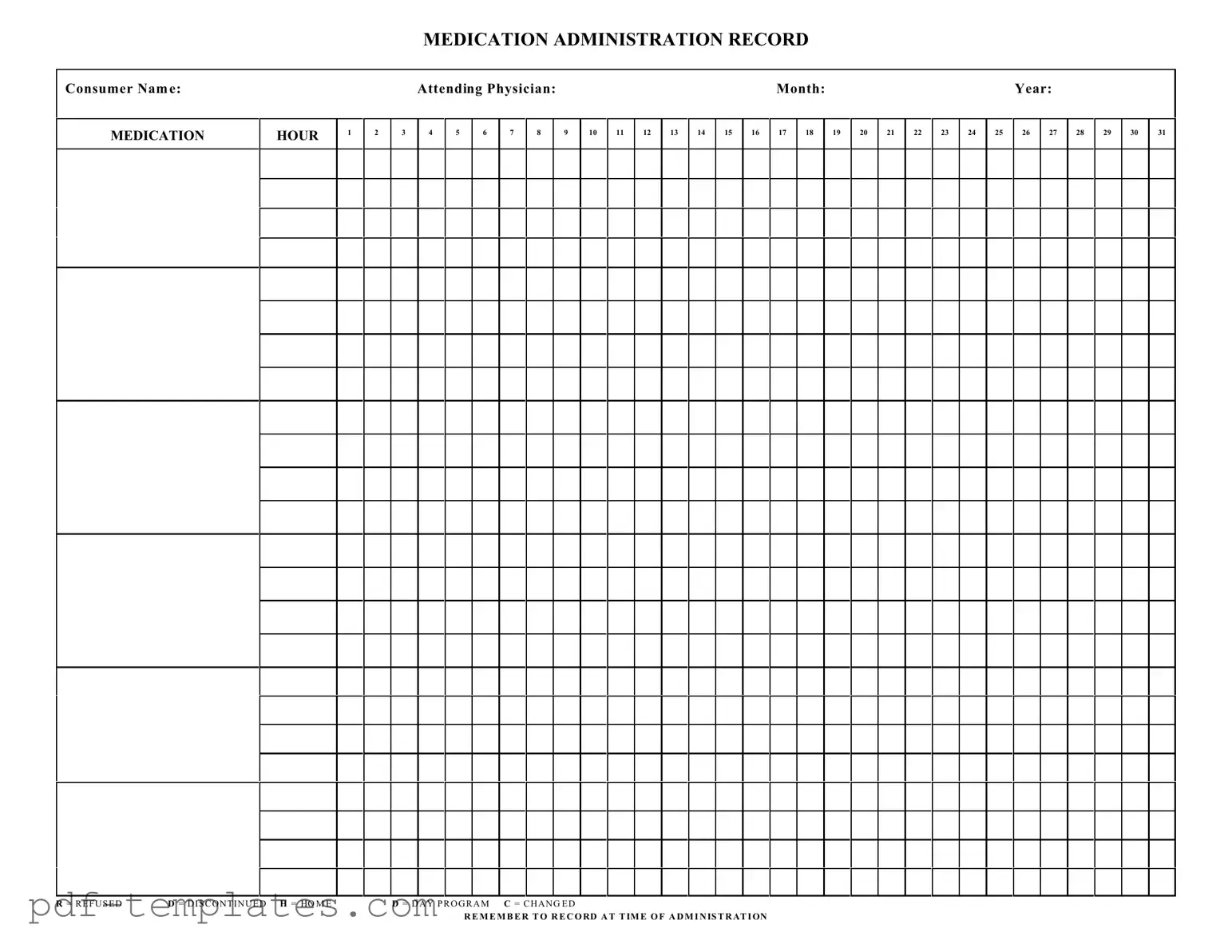The Medication Administration Record (MAR) is similar to the Patient Medication List, which serves as a comprehensive inventory of all medications a patient is currently taking. This document is essential for healthcare providers to ensure that they are aware of any potential drug interactions and to maintain an accurate medication history. Just like the MAR, the Patient Medication List requires updates whenever there are changes in the patient's medication regimen, thereby supporting safe and effective medication management.
Understanding the importance of accurate documentation in healthcare is crucial, as it not only ensures the proper administration of treatments but also reinforces the accountability of care providers. One essential form in this regard is the USCIS I-864 form, which can be explored further at documentonline.org/blank-uscis-i-864, highlighting the importance of financial support in the immigration process, echoing the structured approach required in patient care documentation.
Another document akin to the MAR is the Medication Reconciliation Form. This form is utilized during transitions of care, such as hospital admissions or discharges, to ensure that a patient’s medication orders are accurate and complete. Similar to the MAR, the Medication Reconciliation Form helps prevent medication errors by comparing the medications a patient is currently taking with those prescribed by their healthcare provider. Both documents emphasize the importance of clear communication and meticulous record-keeping in promoting patient safety.
The Treatment Administration Record (TAR) also shares similarities with the MAR. The TAR is used primarily in settings like long-term care facilities to document the administration of various treatments, including medications, therapies, and procedures. Both the TAR and MAR require diligent record-keeping to track what has been administered, when, and by whom. This ensures that all healthcare providers involved in a patient's care have access to accurate and up-to-date information, thereby enhancing the quality of care provided.
Lastly, the Nursing Care Plan can be compared to the MAR in that both documents play crucial roles in patient care management. The Nursing Care Plan outlines the specific interventions and goals for a patient’s care, including medication administration. While the MAR focuses on documenting the actual administration of medications, the Nursing Care Plan provides a broader context, detailing how those medications fit into the overall treatment strategy. Both documents are essential for ensuring that patient care is coordinated, comprehensive, and effective.
